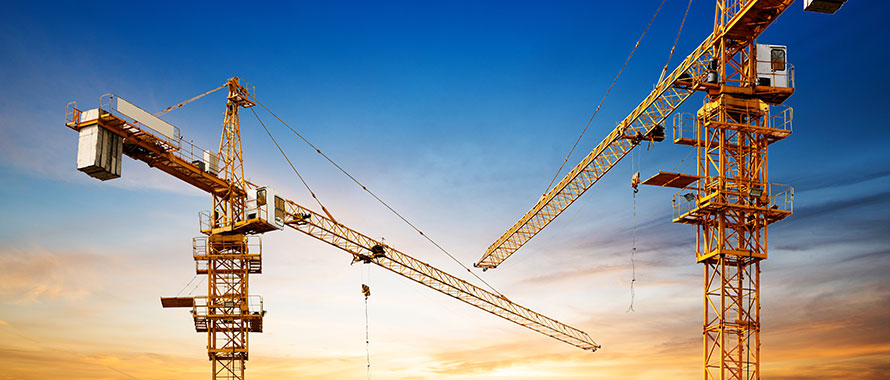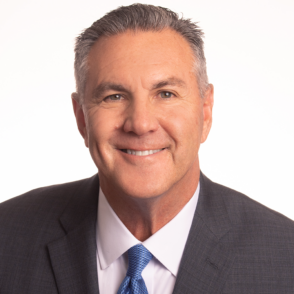An October 7 construction site accident in Montgomery, Ohio triggered a gas line explosion that sent flames and smoke into the sky for hours and forced the evacuation of nearby buildings. A John R. Jurgensen Company construction truck reportedly backed over the gas line and struck a utility pole, igniting the blast and shaking the surrounding area. Thankfully, there were no injuries; however, 500 gas customers lost service and neighboring intersections were temporarily closed to traffic.
In a separate incident, 22 people were injured in a crane accident that occurred when two construction cranes at a mixed-use development work site in Austin, Texas became entangled.
These recent accidents exemplify some of the severe liability risks assumed by companies involved in construction. The larger the accident, the greater the potential for lawsuits and multimillion-dollar settlements, said Denis Brady, President, Burns & Wilcox Brokerage, San Francisco, California.
While construction companies commonly have Commercial General Liability (CGL) Insurance policies with coverage limits of $1 to $2 million, Brady stressed that given the current legal climate, such companies should have Excess Liability Insurance policies with several million-dollar coverage limits as well.
“Primary $1 to $2 million CGL and Excess Liability Insurance limits are no longer adequate,” Brady said. “Contractors are facing shrinking availability and higher premiums for primary CGL and Excess Liability Insurance coverage as a result of increasingly large judgements.”
‘Nuclear’ judgments among factors hardening market
The rise of so-called “nuclear” judgments exceeding $10 million in the U.S. is often attributed in part to social inflation,1 a term that refers to rising litigiousness spurred by changes in how plaintiffs view what they are owed by commercial defendants.
“Jury settlements in lawsuits filed over construction accidents keep growing larger,” Brady said. “It is not unusual for even a minor accident to result in a settlement of $5 to $10 million. An accident involving dozens of injured parties could result in a $100 million settlement.”

Jury settlements in lawsuits filed over construction accidents keep growing larger. It is not unusual for even a minor accident to result in a settlement of $5 to $10 million.
Jury award amounts in construction industry-related lawsuits have been rising for about a decade, Brady explained, prompting insurance carriers to reevaluate their rates and limits on CGL and Excess Liability Insurance policy coverage for companies in high-hazard business sectors.
Since the October 2019 building collapse at the Hard Rock Hotel site in New Orleans, which resulted in the death of three workers and the injuries of several others, at least one wrongful death lawsuit has been filed2 and the city of New Orleans has sued the project’s property developers for unspecified damages.3 This tragic, high-profile accident and ensuing lawsuits underline the importance of Excess Liability Insurance.
The inherent risk associated with crane operations, and high severity potential, make companies in this sector particularly difficult to insure, according to Adrian Smith, Managing Director, Burns & Wilcox Brokerage, Chicago, Illinois.
A majority of E&S Insurers have exited writing lead Umbrella for crane operations, with tower cranes being exceptionally difficult to place, he said. “With recent large jury awards, companies are best served by investing in Excess Liability Insurance policies with appropriate coverage limits for their level of risk.”

With recent large jury awards, companies are best served by investing in Excess Liability Insurance policies with appropriate coverage limits for their level of risk.
Although the threshold for filing lawsuits in Canada is much higher than that in the U.S. and catastrophic losses are less common, the country’s construction industry is still experiencing a shrinking Excess Liability Insurance market, explained Steven Hrab, Manager, Construction, Burns & Wilcox, Toronto, Ontario. “Canadian insurers utilize many of the same markets and experience the same challenges as U.S. insurers when it comes to underwriting construction industry coverage,” he explained. “There simply are fewer markets that will accept the increasing expenses and severity of risk inherent in construction.”
Despite the hardening market, solutions for construction—including operations involving cranes—are available, Brady pointed out. Burns & Wilcox has access to a limited-distribution market for insurance for cranes, he noted, adding that the company is one of the few with access to such coverage.
Crane operation carries high risks, strict requirements
Between 2011 and 2017, the U.S. Bureau of Labor Statistics reported 297 crane-related deaths, 43 percent of which took place in the private construction industry sector.4 Such accidents frequently make local and national headlines.
After a crane carrying a heavy load of rebar suddenly malfunctioned at a Florida construction site on August 5, five workers were hospitalized with injuries; two of the workers were impaled by steel bars dropped from the crane.5 In Michigan, two workers were electrocuted May 27 after a crane they were operating came in contact with 14,400-volt electrical lines.6 Last October, a crane being used by a crew repairing power lines in Long Beach, California collapsed onto a home and injured the homeowner.7
The inherent risk associated with crane operations make companies in this sector particularly difficult to insure, according to Smith. Up to 90 percent of insurers in the construction marketplace no longer offer Excess Liability Insurance for this class of business, he said.
Smith emphasized the necessity of Excess Liability Insurance policies with high coverage limits for construction companies. Excess Liability Insurance can help with costs that exceed the limits of a CGL Insurance policy related to third-party injury and property damage, but also with the legal costs of defending a lawsuit stemming from an accident.
A construction crane collapsed onto a downtown Toronto intersection on August 6, narrowly avoiding pedestrians and vehicles in the area.8 The incident marked the second crane collapse in the city in less than a month, officials said. While there have been no major crane-related losses in Canada in recent years, said Hrab, there are strict requirements in place for such operations.
“In Canada, crane operators must be highly qualified, general contractors and site supervisors must be experienced, and construction sites where cranes are operated must be free of unnecessary workers,” Hrab explained.
Similarly, the U.S. Occupational Safety and Health Administration (OSHA) has rigorous standards regulating the training, certification and evaluation of crane operators. Adherence to these standards is imperative; crane riggers and operators must be certified and experienced in the operation of particular equipment as well as in particular job site conditions. There are also requirements set by states and local municipalities for crane operations.
The level of regulation reflects the intrinsic danger of operating cranes in a construction site. To adequately address potential hazards such as third-party injury, fatality and property, all parties engaged in construction projects involving cranes must carry robust CGL and Excess Liability Insurance coverage. They should also consider an Inland Marine policy to help mitigate the cost of repairing or replacing cranes damaged in an accident.
Specialized, expert guidance more critical than ever
A challenging CGL and Excess Liability Insurance market and upward trending settlement totals make working with an experienced insurance broker or agent more critical than ever, especially as U.S. and Canadian businesses weather an uncertain economy amid the COVID-19 pandemic. Experienced insurance brokers and agents will engage clients in discussions about premium increases or new restrictions well in advance of when such changes might go into effect, Brady noted.
Insurance brokers and agents should also be specialized within the construction industry, added Smith. “With high-severity classes such as crane operations, companies should be working with insurance experts who are well-versed in the industry and familiar with legal trends.”
When evaluating a submission, underwriters will want to review a construction company’s history of previous builds as well as its loss control and risk management measures to ensure safety protocols are adhered to, Hrab said.

A company could experience a loss and find out an involved subcontractor has inadequate CGL Insurance coverage or exclusions in their policy. Companies should be proactive and take advantage of all opportunities to protect themselves.
This also includes how subcontractors are hired and whether they are properly insured, according to Brady. “A company could experience a loss and find out an involved subcontractor has inadequate CGL Insurance coverage or exclusions in their policy,” he said. “Companies should be proactive and take advantage of all opportunities to protect themselves.”
For example, faulty workmanship is typically excluded in CGL policies, but may be covered by Professional Liability Insurance such as ProConstruct, a Professional Liability Insurance program exclusive to Burns & Wilcox that provides contractors, engineers and other construction design professionals with a broad layer of customized coverage.
Specially amended CGL Insurance and Inland Marine policies can help provide added protections to mitigate losses stemming from damage to third-party property, including loss of use coverage for typically excluded third-party materials or equipment damaged in incidents involving a crane.
Some contractors prefer to insure specific projects individually rather than purchase a practice policy that covers everything, Brady explained. Experienced insurance brokers and agents can help inform business leaders’ decisions with policy and coverage solutions to address all of their potential liabilities across a broad range of scenarios.
“It is important for companies to work with skilled insurance brokers and agents who know the industry and can help them get the best coverage they can at the lowest rate possible,” Brady said, adding that “Burns & Wilcox has the experience, market access and expertise construction companies need to help them navigate these turbulent times.”
Sources 1 Demos, Telis. “The Specter of Social Inflation Haunts Insurers.” Wall Street Journal, December 27, 2019. 2 “Family of Worker Killed in Hard Rock New Orleans Collapse Files Suit.” NBC5 Chicago. WMAQ, November 21, 2019. 3 Torres, Ella. “New Orleans sues Hard Rock Hotel developers over fatal collapse.” ABC News, August 26, 2020. 4 U.S. Bureau of Labor Statistics. “Injuries, Illnesses, and Fatalities: Fact Sheet, Fatal Occupational Injuries Involving Cranes.” United States Department of Labor, May 2019. 5 Aaro, David. “Florida crane accident leaves 2 workers impaled, total of 5 hospitalized: reports.” Fox News, August 6, 2020. 6 “Crane accident at Wixom Lake electrocutes two workers–one in cardiac arrest.” ABC12 Flint. WJRT, May 28, 2020. 7 Kurzweil, Anthony; Burch, Wendy. “Surveillance Video Shows Long Beach Crane Collapse That Left 1 Injured.” CW5 Los Angeles. KTLA, October 8, 2019. 8 “Nobody hurt after crane collapses onto downtown Toronto intersection.” CBC News, August 6, 2020.






